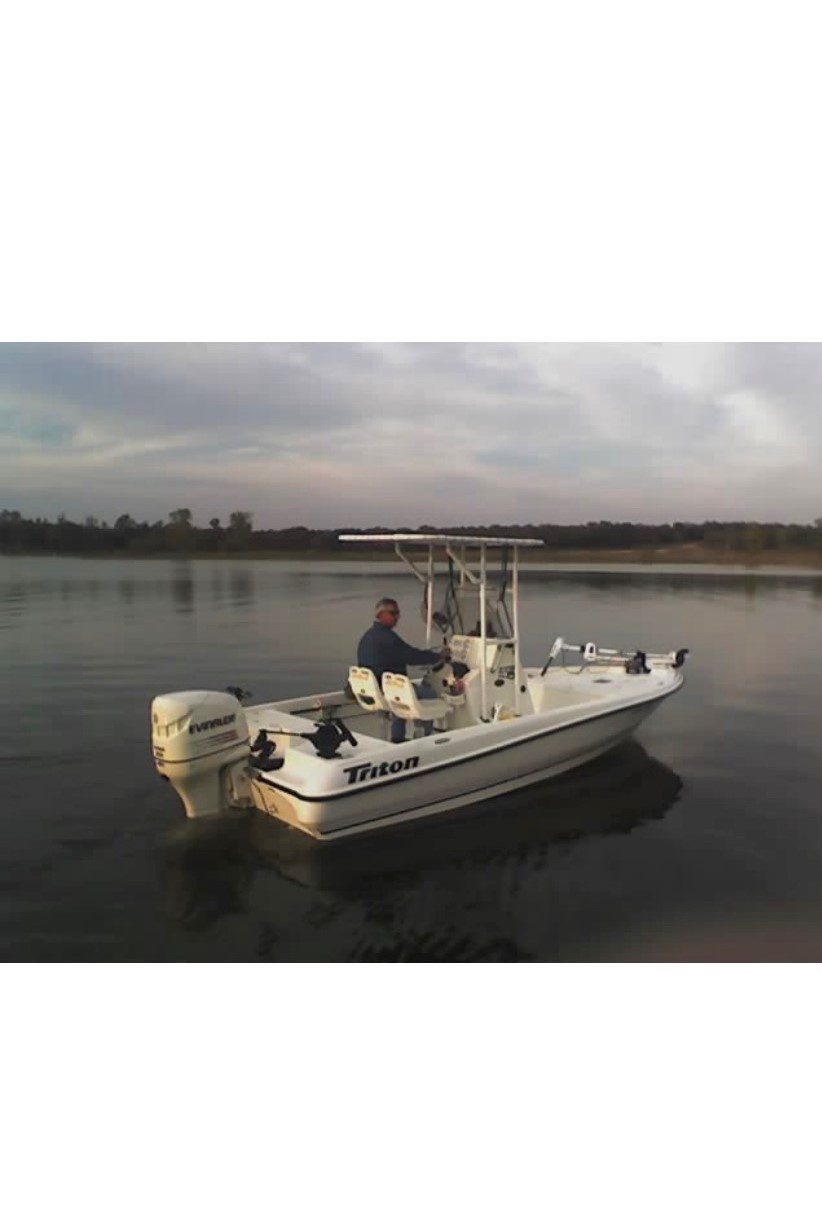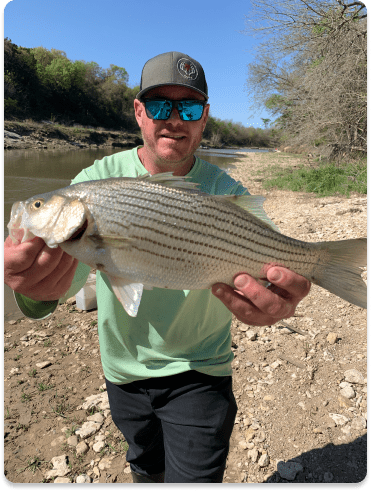Fishing Charters - Lake Whitney Fishing Guides
Welcome to Action Striper Guide Service, where we offer 3 separate fishing packages to fit every anglers needs, so look them over and pick the package that you feel is tailored best for you!
Discover the expertise of our Striper guides Lake Whitney, ensuring an unforgettable fishing experience tailored to your preferences.
254-717-6822
Fishing Made Easy
Leave the hassle of finding the best spots and preparing the gear to us. We provide all the fishing gear and tackle you need for a successful day on the water. From rods and reels to life jackets for the little ones, we’ve got you covered. Optimize your angling adventure with our Lake Whitney Striper Guides, offering personalized services for an exceptional day on the water.
Note : kids 13 and under must wear a life jacket at all times.
Let’s create memories that last!
Our Packages
First Package "TopWater Hunting"
This package is designed for small personalized groups of One or Two people fishing out of a 20ft Center Console with Captain Dan Dillon, who specializes in Top-Water Fishing for Striper & White Bass using artificial Lures. Fishing Guides Lake Whitney provide insider knowledge and local insights, enhancing your chances of a successful and enjoyable catch. These trips are typically Catch & Release, so if you want fish to take home, please be sure to let us know when you book your trip and we’ll be more than happy to accommodate you. This package costs $350.00
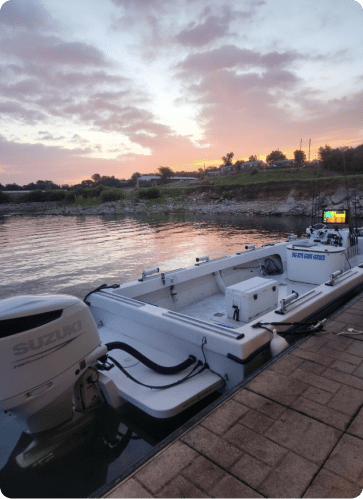
Second Package "Live Bait Action"
This package is designed to accommodate larger parties of up to 6 people fishing out of a custom 24ft boat with Captain Daniel Dean who specializes in using live bait for those striper that are down deep. Navigate the waters of Lake Whitney confidently with our Lake Whitney fishing guides, combining skill and local expertise for a memorable fishing excursion. This package is $425 for up to 2 people and $125 for each additional person, with a maximum of 6 people per trip. If you have more than 6 people in your party, don’t worry, we’ll divide them up and take multiple boats.

Third Package "River Running"
This package is also designed for small personalized groups of one or two people and the focus is on catching White Bass in our local rivers using either ultralight rods and small swim baits, or Fly rods and Clouser Minnow Flies during the spring spawn, which runs from the beginning of March through the end of April. Explore the outdoors with confidence, guided by Fishing Charters that offer tailored experiences for anglers of all skill levels . This package costs $300.00
What you’ll need to bring With Our Lake Whitney Striper Guides
Drinks/snacks
Appropriate clothing for current weather forecast
White sole shoes
Valid Texas Fishing License (17 & up)
Camera for photos
Sunscreen & Sunglasses
*No glass containers please
gallery

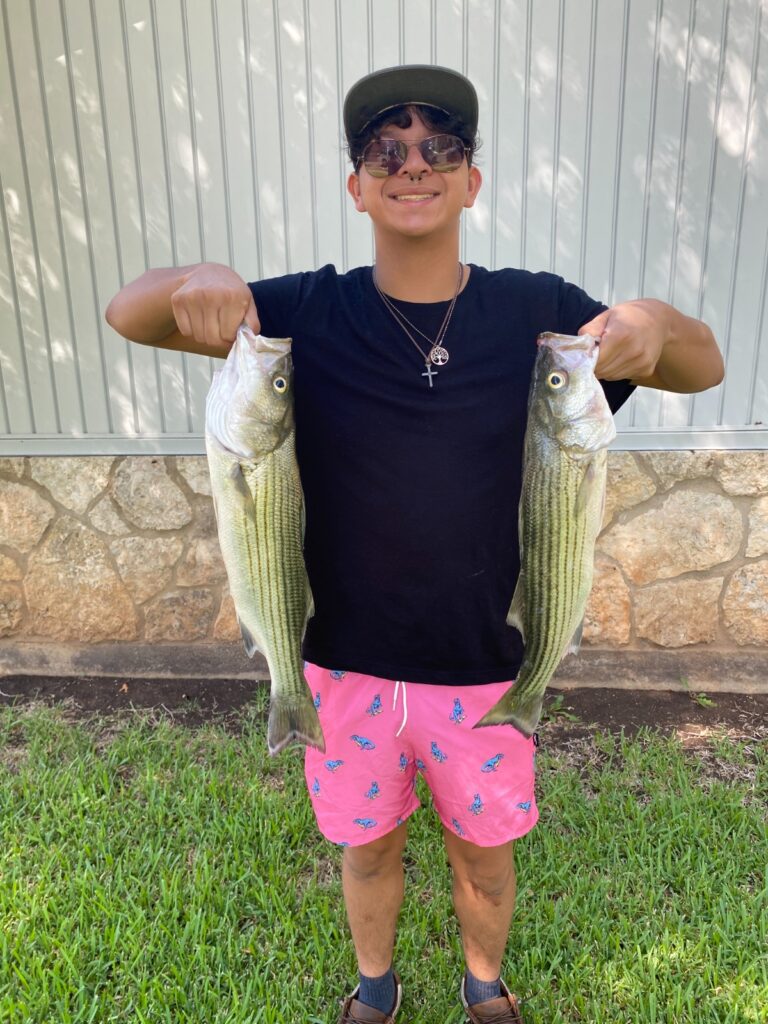
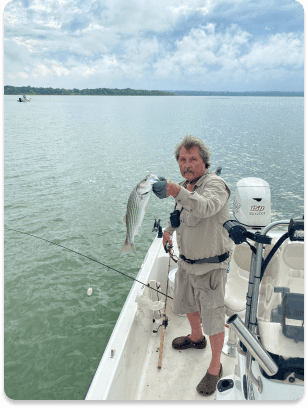
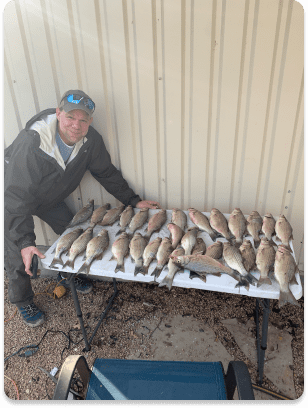
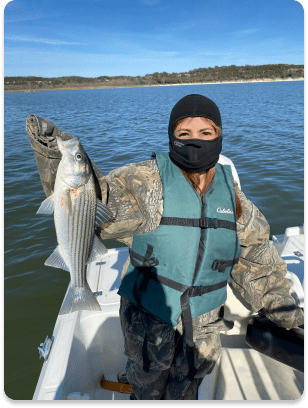
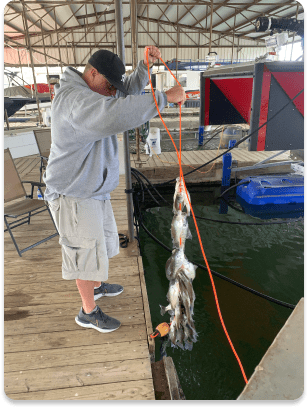
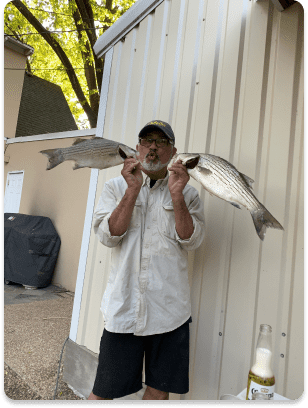
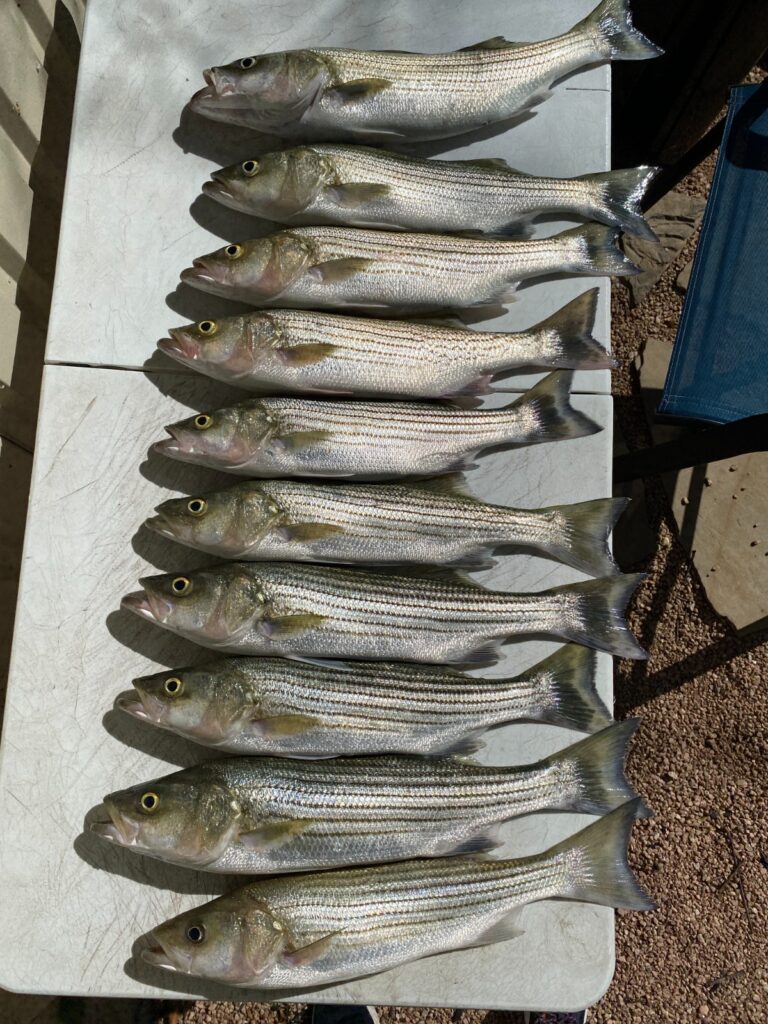
Special Notice
- All trips are exclusive private charters.
- Tips are not mandatory, but they are certainly appreciated.
- payment methods: Cash, Venmo, Major credit cards.
- A 4% transaction fee will be added to any payment made by credit card.
- 72 Hour Notice Required for all cancellations.
- A $100 deposit is required at time of booking, and this can be paid over the phone with a major credit card or with Venmo.
- Trips may be cancelled at guides sole discretion due to things like bad weather, mechanical failure, unsafe water conditions etc.
- In the event of a cancellation, you will have the option to rebook your trip for another time, or receive a full refund of your deposit.
- If we don’t catch fish, your trip is free!!
People also ask
Is there good fishing at Lake Whitney?
Absolutely! Lake Whitney is renowned for its exceptional fishing opportunities. The lake boasts a diverse range of fish species, including largemouth and striped bass, catfish, crappie, and more. Anglers of all skill levels find the lake’s varied ecosystem and scenic beauty make it a prime destination for a rewarding fishing experience.
How deep is Lake Whitney?
Lake Whitney has varying depths across its 23,500 acres, with an average depth of around 30 feet. However, the lake reaches depths of up to 100 feet in certain areas. The fluctuating depths contribute to the diverse habitats that support the lake’s abundant fish population.
What is the limit on stripers in Lake Whitney?
As fishing regulations can change, it’s crucial to check the latest guidelines from the Texas Parks and Wildlife Department. As of the last update, the daily bag limit for striped bass on Lake Whitney is five fish, with a minimum length requirement. It’s essential for anglers to stay informed about any changes in regulations to ensure responsible fishing practices.
How do you catch a striper on Lake Whitney?
Catching striped bass on Lake Whitney often involves various techniques. Trolling with artificial lures or live bait, such as shad, can be effective. Paying attention to water temperatures and fishing near underwater structures, like points and humps, can increase your chances of hooking into these elusive and exciting fish.
What month is best for striped bass fishing?
While striped bass can be caught throughout the year on Lake Whitney, many anglers find the spring and fall months to be particularly productive. During these seasons, the water temperatures are favorable, and striped bass are more active, making it an ideal time for successful fishing trips.
What is the best bait for striper?
Live bait such as shad or other small fish is often considered the best bait for striped bass on Lake Whitney. However, artificial lures like swimbaits, crankbaits, or topwater lures can also be effective, especially when mimicking the baitfish present in the lake.
How deep do you fish for striper?
The depth at which striped bass are found can vary, but they are often located in deeper waters, particularly during the warmer months. Trolling or casting near underwater structures at varying depths can help locate schools of striped bass.
What color lures do striped bass like?
Striped bass are known to be attracted to a variety of lure colors, depending on factors such as water clarity and light conditions. Experimenting with colors like white, chartreuse, or silver can be effective. Additionally, choosing lures that imitate the local forage can increase your chances of success.
Why are striped bass so hard to catch?
Striped bass can be challenging to catch due to their elusive nature and varying feeding patterns. They are highly migratory and often move in schools, requiring anglers to be strategic in their approach. Understanding the lake’s structure, water temperature, and using the right bait or lures are essential elements in overcoming the challenges of catching striped bass.
What is the best time of day to catch striped bass?
Striped bass are known to be more active during low-light conditions, such as dawn and dusk. Many anglers find that the early morning or late evening hours provide optimal opportunities for successful striped bass fishing. However, these fish can also be caught throughout the day, especially during seasonal feeding patterns.
Are lures or bait better for striped bass?
The choice between lures and bait for striped bass often depends on various factors, including angler preference and the prevailing fishing conditions. Live bait, such as shad or other small fish, is a traditional and effective choice. However, artificial lures, like swimbaits or topwater lures, can also yield successful results, offering anglers versatility in their approach.
Do you bottom fish for striped bass?
While bottom fishing is not the primary technique for targeting striped bass on Lake Whitney, it can be effective in specific situations. Anglers may choose to use live bait or bottom rigs near underwater structures where striped bass are known to congregate. However, other techniques such as trolling or casting are often more popular for pursuing these dynamic fish.
Is charter fishing worth the money?
Charter fishing is worth the money for those seeking expert guidance, quality equipment, and access to prime fishing locations. A charter ensures a higher likelihood of a successful and enjoyable fishing experience, making it a valuable investment for both beginners and seasoned anglers.
Why do fishing charters cost so much?
The cost of fishing charters reflects expenses like fuel, maintenance, quality equipment, and the expertise of the captain and crew. Additionally, charters often include amenities, licenses, and the convenience of not needing personal gear. The overall value lies in the optimized fishing experience provided.
How much does it cost to go deep-sea fishing in Texas?
Deep-sea fishing costs in Texas vary based on factors like charter duration and the type of fish targeted. On average, prices range from $150 to $300 per person for half-day trips, while full-day trips can range from $300 to $600 per person.
How much is charter fishing in Tampa?
Charter fishing prices in Tampa depend on factors like trip duration and targeted species. On average, half-day charters range from $400 to $600, while full-day charters can cost between $700 and $1,200. Prices may vary among charter companies.
How much do you tip charter fishing?
Tipping for charter fishing is customary and generally ranges from 15% to 20% of the total charter cost. However, the tip amount can be adjusted based on the quality of service provided by the captain and crew.
How much do you tip a fishing guide?
Tipping a fishing guide is typically 15% to 20% of the total guide fee. Adjust the tip based on the guide’s expertise, friendliness, and effort to make your fishing experience enjoyable and successful.
Who keeps the fish on a charter?
In most cases, the customers keep the fish they catch on a charter. However, some charters may have regulations or catch limits, so it’s essential to clarify this with the captain beforehand.
What to expect on your first fishing charter?
On your first fishing charter, expect a briefing on safety measures, an introduction to equipment, guidance from the captain, and an exciting fishing experience. Be prepared to learn and enjoy the adventure.
What if you have to pee on a fishing charter?
Most fishing charters have onboard facilities, but if nature calls and facilities aren’t available, communicate with the captain. They can guide you on the best course of action, such as finding a suitable spot or returning to shore if necessary.
How does charter fishing work?
Charter fishing involves hiring a professional captain and crew, along with a fully equipped boat, for a specified duration. The charter provides everything needed for fishing, from gear to expertise, ensuring a memorable and productive angling experience.
Can you sell tuna you catch on a charter?
Legally, selling fish caught on a charter may be subject to regulations. It’s crucial to check local fishing laws, as some areas restrict the sale of fish caught for recreational purposes.
How much do fishermen get for bluefin tuna?
The price for bluefin tuna varies but can be substantial, with high-quality fish often fetching thousands of dollars per pound in the commercial market.
How many tuna can a commercial fisherman catch in a day?
Daily catch limits for tuna vary based on regulations and location. Commercial tuna fishermen must adhere to strict quotas set by fisheries management to ensure sustainable harvesting.
How much do tuna fishermen make?
Earnings for tuna fishermen vary widely based on factors like location, catch size, and market conditions. Successful tuna fishermen can earn a lucrative income, especially when targeting high-value species like bluefin tuna.
Is fishing an expensive hobby?
Fishing costs can vary, but it can be both an affordable and expensive hobby. Basic gear for recreational fishing is reasonably priced, but expenses increase when factoring in travel, charters, and specialized equipment.
Why is offshore fishing so expensive?
Offshore fishing involves higher costs due to factors like fuel, maintenance of larger vessels, longer trip durations, and the need for specialized equipment to target deep-sea species, contributing to the overall expense.
What are the best shoes to wear on a fishing charter?
Comfortable, non-slip, closed-toe shoes with good grip are ideal for a fishing charter. Deck shoes, boat shoes, or athletic shoes with non-marking soles provide stability and protection on the boat.

